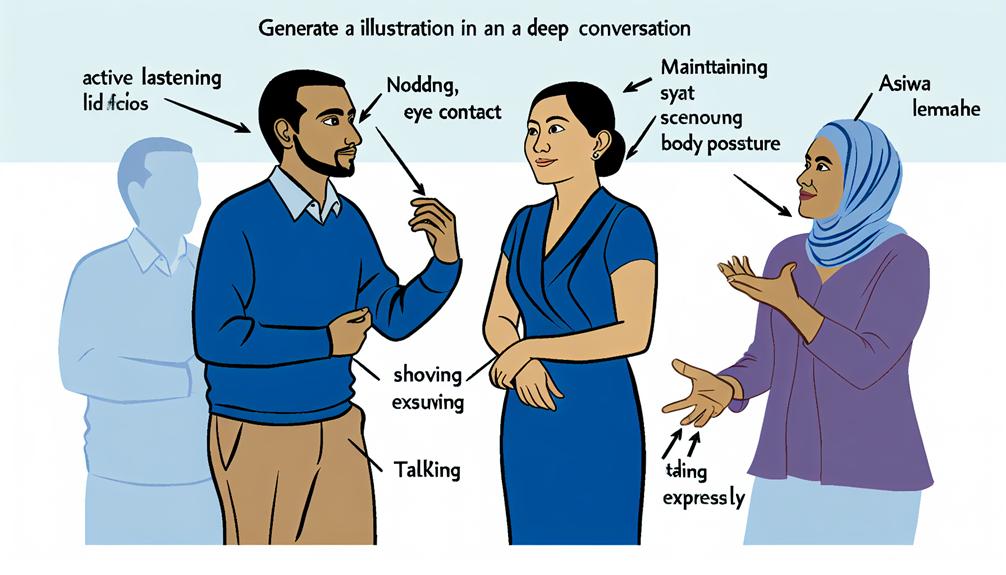Exploring the fundamental attributes that define persuasive communication unveils a nuanced landscape where credibility, emotional appeal, and audience-centricity intersect to shape compelling narratives. As we dissect the six pillars of persuasion, from establishing trust through to ethical practices, a deeper understanding emerges of how to navigate influence with finesse and integrity. Consider how harnessing these attributes can not only shape messages effectively but also cultivate authentic connections that resonate with individuals on a profound level. Discover how each attribute intertwines to craft a persuasive tapestry that captivates and convinces, inviting a deeper exploration into the art of influence.
Establishing Credibility and Trust
Establishing credibility and trust is paramount in persuasive communication, as it forms the foundation upon which all successful persuasion efforts are built. Building rapport with your audience is crucial in gaining respect and fostering a connection that enhances receptivity to your message. When introducing yourself, emphasize your expertise and experience to establish credibility. Dressing appropriately demonstrates respect for the audience and the occasion, further enhancing your trustworthiness. Explaining why your message matters to the audience shows that you understand their needs and interests, contributing to a sense of rapport. By following these steps and consistently delivering valuable content, you can strengthen relationships, increase trust, and ultimately improve the effectiveness of your persuasive communication efforts.
Emotional Appeal and Management
Utilizing emotional appeal strategically can significantly enhance the impact of persuasive communication, influencing audience responses and guiding decision-making processes. When considering emotional appeal and management in persuasion, key elements come into play:
- Emotional Intelligence: Understanding and managing emotions effectively can help in connecting with the audience on a deeper level.
- Influence Tactics: Employing various tactics such as storytelling, empathy, and personalization can evoke emotional responses and sway decision-making.
- Empathy: Demonstrating empathy towards the audience's feelings and perspectives can build trust and rapport.
- Emotional Regulation: Managing one's emotions and reactions during persuasive interactions is crucial for maintaining credibility and professionalism.
Logical and Rational Persuasion
In the realm of persuasive communication, the art of logical and rational persuasion serves as a foundational pillar for constructing compelling arguments backed by evidence and aligning with the values of the audience. Building arguments on evidence and facts, along with presenting a credible case, is essential in logical and rational persuasion. This approach appeals to the audience's rational thinking, making it more likely for them to be convinced by the presented information. To emphasize the importance of evidence-based cases and the construction of compelling arguments, the table below outlines key points for effective logical and rational persuasion:
| Logical and Rational Persuasion |
|---|
| Build arguments on evidence |
| Construct a compelling case |
| Align with audience's values |
| Appeal to rational thinking |
| Present a credible argument |
Audience-Centric Approach
Understanding the preferences and expectations of the target audience is paramount in crafting a persuasive message that resonates effectively.
- Empathy driven communication: Showing understanding and empathy towards the audience's perspective can enhance connection and trust.
- Personalized engagement: Tailoring the message to specific traits or needs of the audience can make it more relatable and impactful.
- Tailored messaging: Crafting content that speaks directly to the concerns and interests of the audience increases the likelihood of engagement.
- Customer-centric approach: Placing the audience at the center of the communication strategy ensures that their needs and desires are prioritized, leading to a more successful persuasive outcome.
How Can the Characteristics of Persuasion Help with Time Management?
Understanding the characteristics of persuasion can be beneficial for time management. By utilizing the best time management tips, individuals can effectively communicate their priorities and goals to others, leading to better cooperation and more efficient use of time. Persuasive techniques can also help in prioritizing tasks and making important decisions.
Can the Attributes of Persuasion be Used to Attract Women to Emotionless Men?
In the dance of romance, weaving the attributes of persuasion can enhance the allure of even emotionless men and attractiveness. With finesse in communication and confidence, a man can draw attentiveness, fostering curiosity amongst women who may find his stoic nature intriguingly enigmatic.
Effective Communication Strategies

Crafting a message that employs clear language, avoids technical jargon, and utilizes visual aids can significantly enhance communication effectiveness in persuasive interactions. By using simple language and providing clear examples, communicators can ensure their message is easily understood by the audience. Organizing content logically and incorporating visual aids can further aid in conveying information effectively. Below is a table highlighting key strategies for effective communication:
| Communication Strategies | Description |
|---|---|
| Use Simple Language | Avoid complex terminology and aim for clarity |
| Provide Clear Examples | Illustrate points with easy-to-understand examples |
| Utilize Visual Aids | Enhance comprehension through visual representations |
Implementing these strategies can help speakers connect with their audience and increase the impact of their persuasive efforts.
Ethical Persuasion Practices
Utilizing ethical persuasion practices in communication involves upholding honesty, transparency, and a commitment to respecting audience autonomy. When engaging in ethical persuasion, it is essential to prioritize respectful communication and transparent messaging. Here are four key practices to ensure ethical persuasion:
- Provide accurate information without exaggeration or deceit
- Listen actively to understand the audience's perspectives and concerns
- Offer choices and opportunities for the audience to make informed decisions
- Avoid coercion or pressure tactics, allowing individuals to decide willingly
Frequently Asked Questions
How Can Cultural Differences Impact the Effectiveness of Persuasion Techniques?
Cultural differences can significantly impact the effectiveness of persuasion techniques by influencing communication styles, values, and beliefs. Adapting strategies to resonate with diverse cultural norms enhances connection and credibility, fostering successful persuasion outcomes.
What Role Does Storytelling Play in Persuasive Communication?
Storytelling in persuasive communication plays a pivotal role by forging emotional connections, enhancing credibility, stimulating imagination, and increasing relatability. Through narratives, complex ideas become simpler, resonating deeply with audiences, making messages memorable and influential.
How Can Body Language and Nonverbal Cues Influence Persuasion?
Body language and nonverbal cues wield significant power in persuasion, influencing power dynamics and emotional cues. They establish connections, convey confidence, sincerity, and empathy. Understanding and utilizing these cues strategically can enhance persuasive communication and foster stronger connections with the audience.
Can Persuasion Be Used for Negative or Harmful Purposes?
Persuasion, akin to a double-edged sword, can be wielded for negative ends. Crossing ethical boundaries and employing manipulative tactics can lead to detrimental psychological impact and raise moral implications, emphasizing the critical need for responsible persuasion practices.
How Does the Timing of a Persuasive Message Impact Its Success Rate?
The timing of a persuasive message significantly impacts its success rate by leveraging emotional appeals when audience receptiveness is high. Understanding when to deliver key messages enhances engagement, resonance, and the likelihood of influencing decisions positively.

















